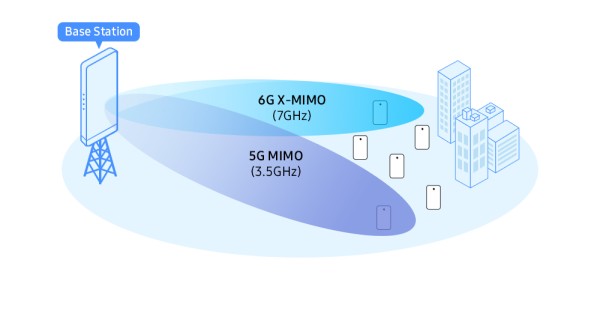Snapdragon 7s Gen 3: Elevating the Mid-Tier Segment
The Snapdragon 7s Gen 3 Mobile Platform is the latest evolution within Qualcomm’s “s” segment, a strategic initiative aimed at democratizing advanced mobile technology. This platform is designed with the intent of pushing the boundaries of what mid-tier smartphones can offer, by integrating selected premium features from the Snapdragon 7-series. The result is a significant leap in performance metrics, with the platform offering nearly a 20% increase in CPU efficiency, driven by the latest Qualcomm Kryo CPU architecture. This improvement translates into faster processing speeds and more efficient multitasking, making everyday tasks smoother and more responsive.
In addition to the CPU enhancements, the Snapdragon 7s Gen 3 offers a substantial 40% boost in GPU performance. This leap in graphical processing power is particularly noteworthy for users who engage in mobile gaming or content creation. The platform’s enhanced GPU ensures that games run more smoothly, with better frame rates and improved visual fidelity, making the gaming experience on mid-tier devices closer to what users might expect from premium smartphones.
Moreover, the Snapdragon 7s Gen 3 has been designed with efficiency in mind. Despite its performance upgrades, the platform manages to reduce overall power consumption by 12%, a crucial feature for users who require long battery life without sacrificing performance. This balance between power and efficiency is a hallmark of Qualcomm’s approach to mobile platform design, ensuring that devices can deliver high-end performance while remaining energy-efficient.
On-Device GenAI: Redefining Mobile AI Capabilities
A key highlight of the Snapdragon 7s Gen 3 is its advanced support for on-device generative AI. In an era where AI-driven experiences are becoming increasingly integral to mobile device usage, the ability to handle complex AI tasks directly on the device, without the need for cloud processing, is a game-changer. The Snapdragon 7s Gen 3 is capable of running large language models (LLMs) such as Baichuan-7B and Llama 2 with 1 billion parameters, which allows for sophisticated AI applications that were previously out of reach for mid-tier devices.
These AI capabilities are essential for a variety of applications, including voice assistants, real-time language translation, and personalized content generation. For instance, voice assistants can now operate with greater accuracy and responsiveness, offering a more seamless user experience. Similarly, real-time translation powered by on-device AI can enable more fluid and natural conversations across different languages, without the delays associated with cloud-based solutions. Personalized content, tailored to the user’s preferences and behaviors, can be generated more effectively, enhancing the overall user experience.
The integration of generative AI directly on the device not only improves performance but also enhances privacy and security, as sensitive data does not need to be sent to the cloud for processing. This is a significant advantage in a time when data privacy is of paramount concern to consumers.
Enhanced Gaming and Imaging: A New Standard for Mid-Tier Devices
Qualcomm’s Snapdragon 7s Gen 3 also brings notable advancements in mobile gaming and imaging, two areas that have seen increasing demand from consumers. Powered by the Qualcomm Adreno GPU, the platform is capable of delivering immersive gaming experiences with high-quality graphics and smooth performance. This is particularly important as mobile gaming continues to grow in popularity, with users expecting console-like experiences on their smartphones. The enhanced GPU performance means that even graphically intensive games can be played with minimal lag and high frame rates, providing a more engaging gaming experience.
In the realm of imaging, the Snapdragon 7s Gen 3 is equipped with a 12-bit triple Image Signal Processor (ISP), which allows for professional-grade photography and videography. The platform supports 4K sHDR video capture, enabling users to record videos with greater detail and color accuracy. This level of imaging capability is typically found in high-end devices, but with the Snapdragon 7s Gen 3, these features are now accessible to users of mid-tier smartphones. Whether it’s capturing stunning landscapes, recording high-definition videos, or snapping crisp photos in low-light conditions, the Snapdragon 7s Gen 3 ensures that users can achieve excellent results without needing to invest in a flagship device.
Expanding Access to Premium Features: Qualcomm’s Strategic Vision
Chris Patrick, Senior Vice President of Mobile Handsets at Qualcomm, emphasized that the Snapdragon 7s Gen 3 is designed to extend the reach of premium mobile features to a broader audience. By incorporating top-tier features from the 7-series, Qualcomm aims to ensure that even budget-conscious consumers can access advanced technologies that were once exclusive to flagship devices. This strategic approach not only enhances the value proposition of mid-tier smartphones but also broadens the market for advanced mobile technologies, making them more inclusive.
Qualcomm’s strategy aligns with its broader goal of expanding its footprint in emerging markets, where cost is a significant factor for consumers. For instance, in India, Qualcomm has been a driving force in making advanced mobile technology more accessible. The recent launch of the Snapdragon 4s Gen 2 mobile platform, which brings 5G connectivity to budget smartphones, is a testament to this commitment. The Snapdragon 7s Gen 3 continues this trend, offering high-performance features at a price point that is more accessible to a larger segment of the market.
Market Adoption and Future Outlook
The Snapdragon 7s Gen 3 is already generating interest among leading original equipment manufacturers (OEMs). Xiaomi, a key player in the smartphone industry, is set to be the first manufacturer to incorporate this platform into its devices. The first smartphone powered by the Snapdragon 7s Gen 3 is expected to be unveiled shortly, signaling the start of a new era for mid-tier devices that offer high-end features. Other major OEMs, such as realme, Samsung, and Sharp, are also expected to adopt this platform in the near future, further expanding the availability of high-performance mid-tier smartphones.
As these manufacturers integrate the Snapdragon 7s Gen 3 into their devices, consumers around the world will have more options when choosing a smartphone that offers both affordability and advanced features. This widespread adoption is likely to accelerate the trend of bringing premium mobile experiences to a broader audience, reshaping consumer expectations and setting new standards for what mid-tier smartphones can deliver.
Conclusion
The Snapdragon 7s Gen 3 Mobile Platform represents a significant milestone in Qualcomm’s ongoing efforts to make high-end mobile technology more accessible to consumers. By offering advanced generative AI capabilities, enhanced gaming experiences, and professional-grade camera features in mid-tier smartphones, Qualcomm is redefining what consumers can expect from their mobile devices. As more OEMs adopt this platform, the reach of these advanced features will continue to expand, bringing premium mobile experiences to an even broader audience worldwide. This expansion not only elevates the mid-tier segment but also underscores Qualcomm’s leadership in driving innovation across the mobile industry.






















